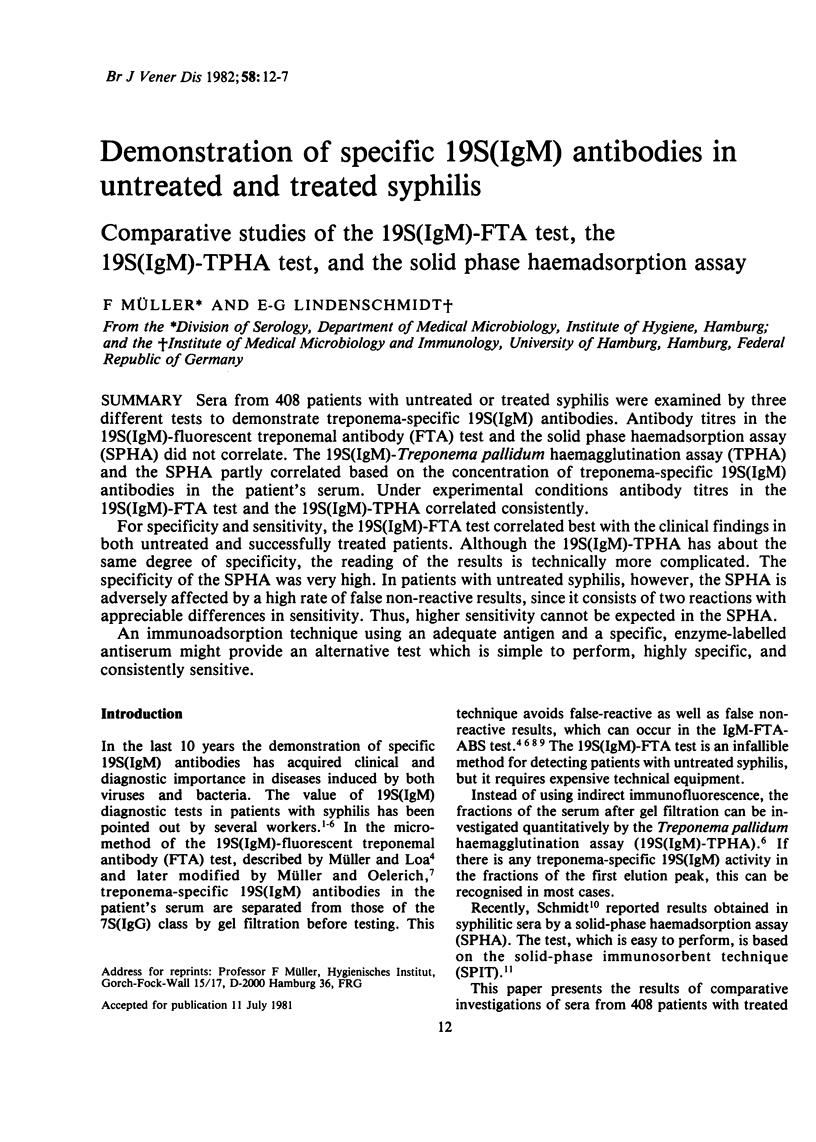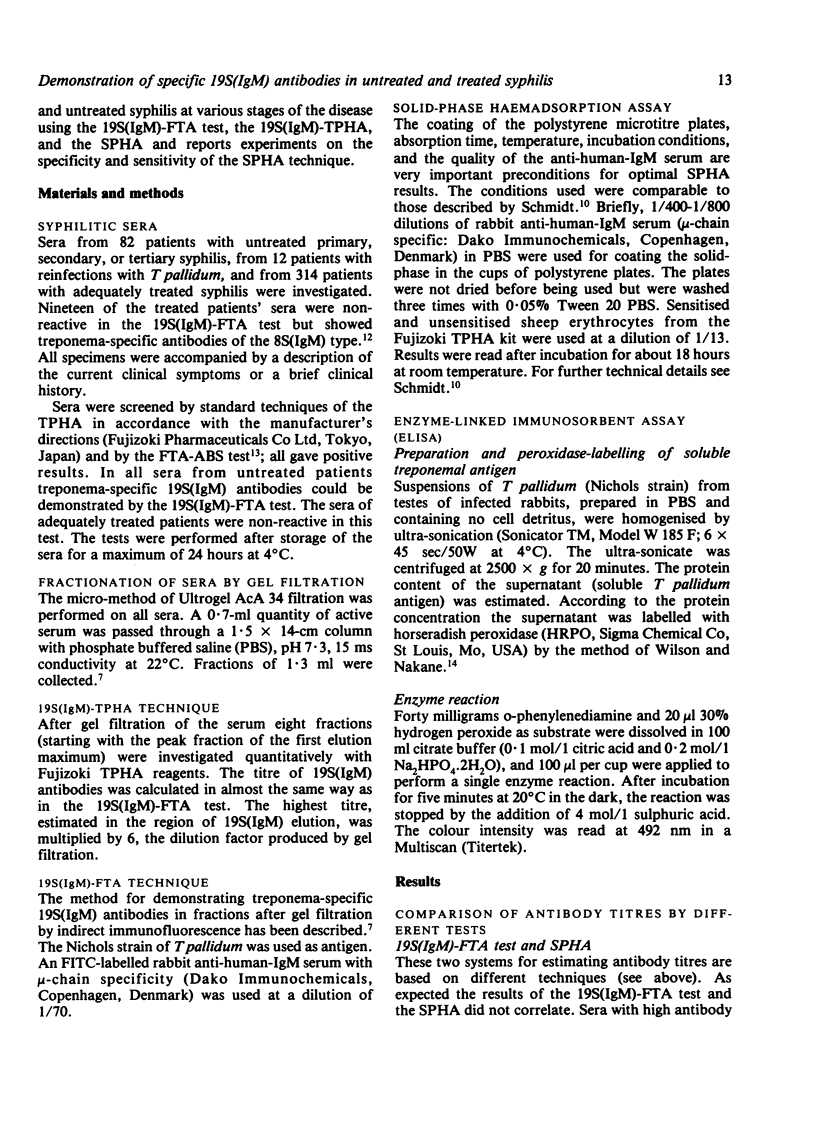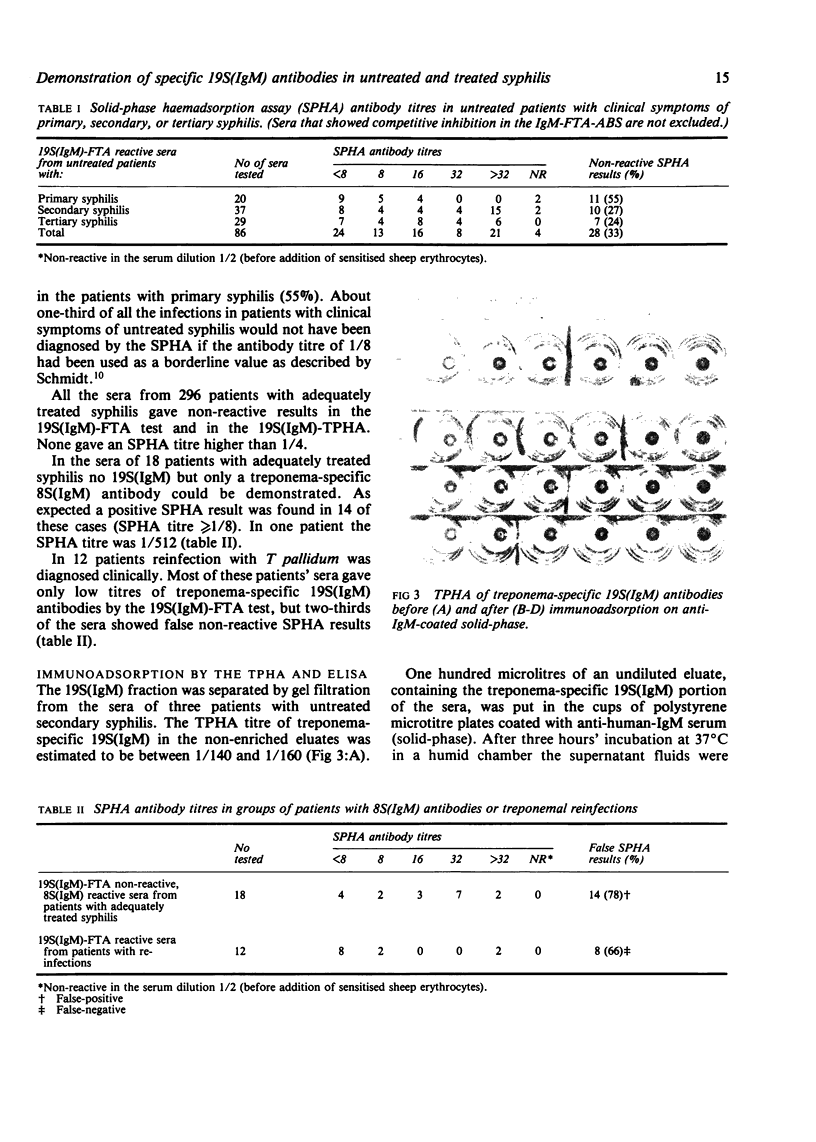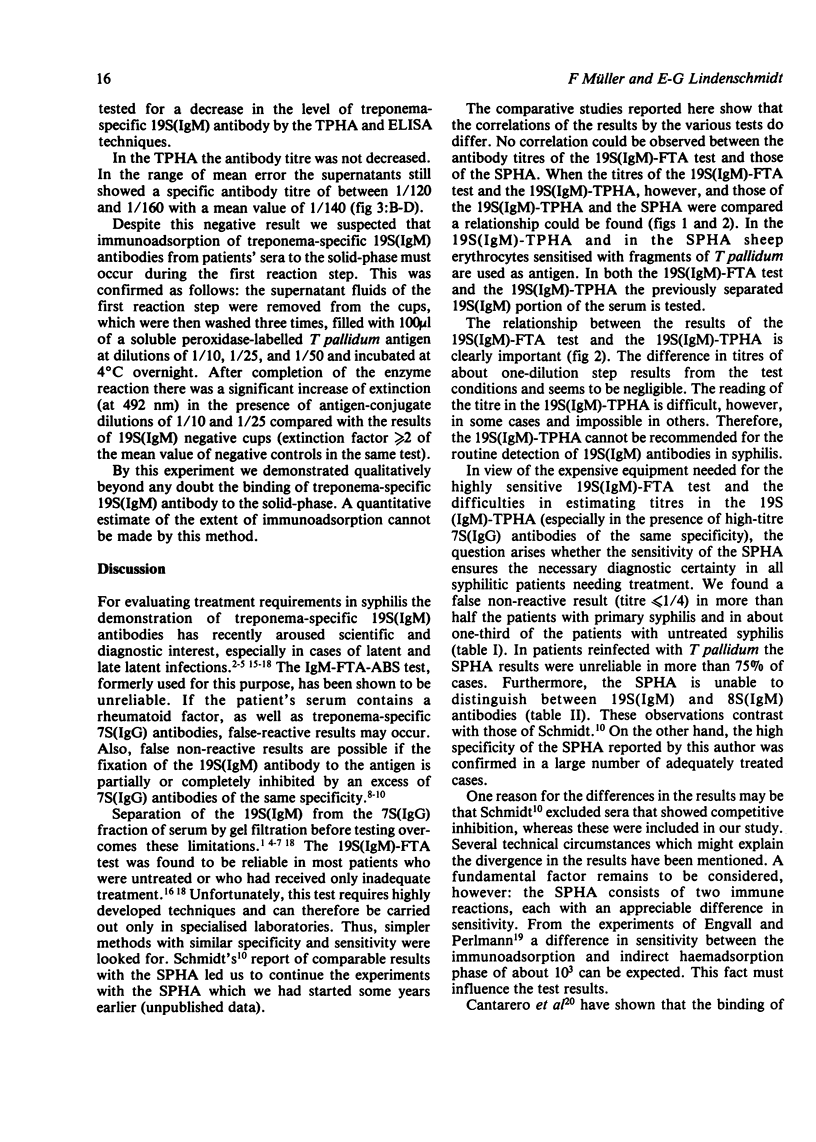Abstract
Sera from 408 patients with untreated or treated syphilis were examined by three different tests to demonstrate treponema-specific 19S(IgM) antibodies. Antibody titers in the 19S(IgM)-fluorescent treponemal antibody (FTA) test and the solid phase haemadsorption assay (SPHA) did not correlate. The 19S(IGM)-Treponema pallidum haemagglutination assay (TPHA) and the SPHA partly correlated based on the concentration of treponema-specific 19S(IgM) antibodies in the patient's serum. Under experimental conditions antibody titres in the 19S(IGM)-FTA test and the 19S(IgM)-TPHA correlated consistently. For specificity and sensitivity, the 19S(IgM)-FTA test correlated best with the clinical findings in both untreated and successfully treated patients. Although the 19S(IgM)-TPHA has about the same degree of specificity, the reading of the results is technically more complicated. The specificity of the SPHA was very high. In patients with untreated syphilis, however, the SPHA is adversely affected by a high rate of false non-reactive results, since it consists of two reactions with appreciable differences in sensitivity. Thus, higher sensitivity cannot be expected in the SPHA. An immunoadsorption technique using an adequate antigen and a specific, enzyme-labelled antiserum might provide an alternative test which is simple to perform, highly specific, and consistently sensitive.
Full text
PDF





Images in this article
Selected References
These references are in PubMed. This may not be the complete list of references from this article.
- Atwood W. G., Miller J. L. Fluorescent treponemal antibodies in fractionated syphilitic sera. The immunoglobulin class. Arch Dermatol. 1969 Dec;100(6):763–769. [PubMed] [Google Scholar]
- Cantarero L. A., Butler J. E., Osborne J. W. The adsorptive characteristics of proteins for polystyrene and their significance in solid-phase imunoassays. Anal Biochem. 1980 Jul 1;105(2):375–382. doi: 10.1016/0003-2697(80)90473-x. [DOI] [PubMed] [Google Scholar]
- Cohen I. R., Norins L. C., Julian A. J. Competition between, and effectiveness of, IgG and IgM antibodies in indirect fluorescent antibody and other tests. J Immunol. 1967 Jan;98(1):143–149. [PubMed] [Google Scholar]
- Engvall E., Perlmann P. Enzyme-linked immunosorbent assay, Elisa. 3. Quantitation of specific antibodies by enzyme-labeled anti-immunoglobulin in antigen-coated tubes. J Immunol. 1972 Jul;109(1):129–135. [PubMed] [Google Scholar]
- Julian A. J., Logan L. C., Norins L. C. Early syphilis: immunoglobulins reactive in immunofluorescence and other serologic tests. J Immunol. 1969 May;102(5):1250–1259. [PubMed] [Google Scholar]
- Krech U., Wilhelm J. A. A solid-phase immunosorbent technique for the rapid detection of rubella IgM by haemagglutination inhibition. J Gen Virol. 1979 Aug;44(2):281–286. doi: 10.1099/0022-1317-44-2-281. [DOI] [PubMed] [Google Scholar]
- Müller F., Loa P. L. Neue Möglichkeiten in der immunologischen Diagnostik der Treponemen-Infektion (Syphilis) Infection. 1974;2(3):127–131. doi: 10.1007/BF01642231. [DOI] [PubMed] [Google Scholar]
- Müller F., Oelerich S. Identification of a low moleculr weight IgM antibody with treponema pallidum specificity in sera of patients with chronic syphilis. Klin Wochenschr. 1979 Jul 3;57(13):667–671. doi: 10.1007/BF01477667. [DOI] [PubMed] [Google Scholar]
- Müller F., Oelerich S. Korrelation immunologischer Parameter zu den Stadien der apparenten und er klinisch stummen Syphilis. Dermatol Monatsschr. 1979 Jun;165(6):385–395. [PubMed] [Google Scholar]
- Müller F. Serodiagnostik der Syphilis aus der Sicht des Immunologen. Hautarzt. 1977 Apr;28(4):167–172. [PubMed] [Google Scholar]
- Müller F. Zur Technik des Nachweises treponemenspezifischer 19S-IgM-Antikörper bei der latenten und spätlatenten Syphilis. Immun Infekt. 1977 Jun;5(3):109–113. [PubMed] [Google Scholar]
- O'Neill P., Nicol C. S. IgM class antitreponemal antibody in treated and untreated syphilis. Br J Vener Dis. 1972 Dec;48(6):460–463. doi: 10.1136/sti.48.6.460. [DOI] [PMC free article] [PubMed] [Google Scholar]
- Schmidt B. L. Solid-hase hemadsorption: a method for rapid detection of Treponema pallidum-specific IgM. Sex Transm Dis. 1980 Apr-Jun;7(2):53–58. [PubMed] [Google Scholar]
- Shannon R., Booth S. D. The pattern of immunological responses at various stages of syphilis. Br J Vener Dis. 1977 Oct;53(5):281–286. doi: 10.1136/sti.53.5.281. [DOI] [PMC free article] [PubMed] [Google Scholar]



